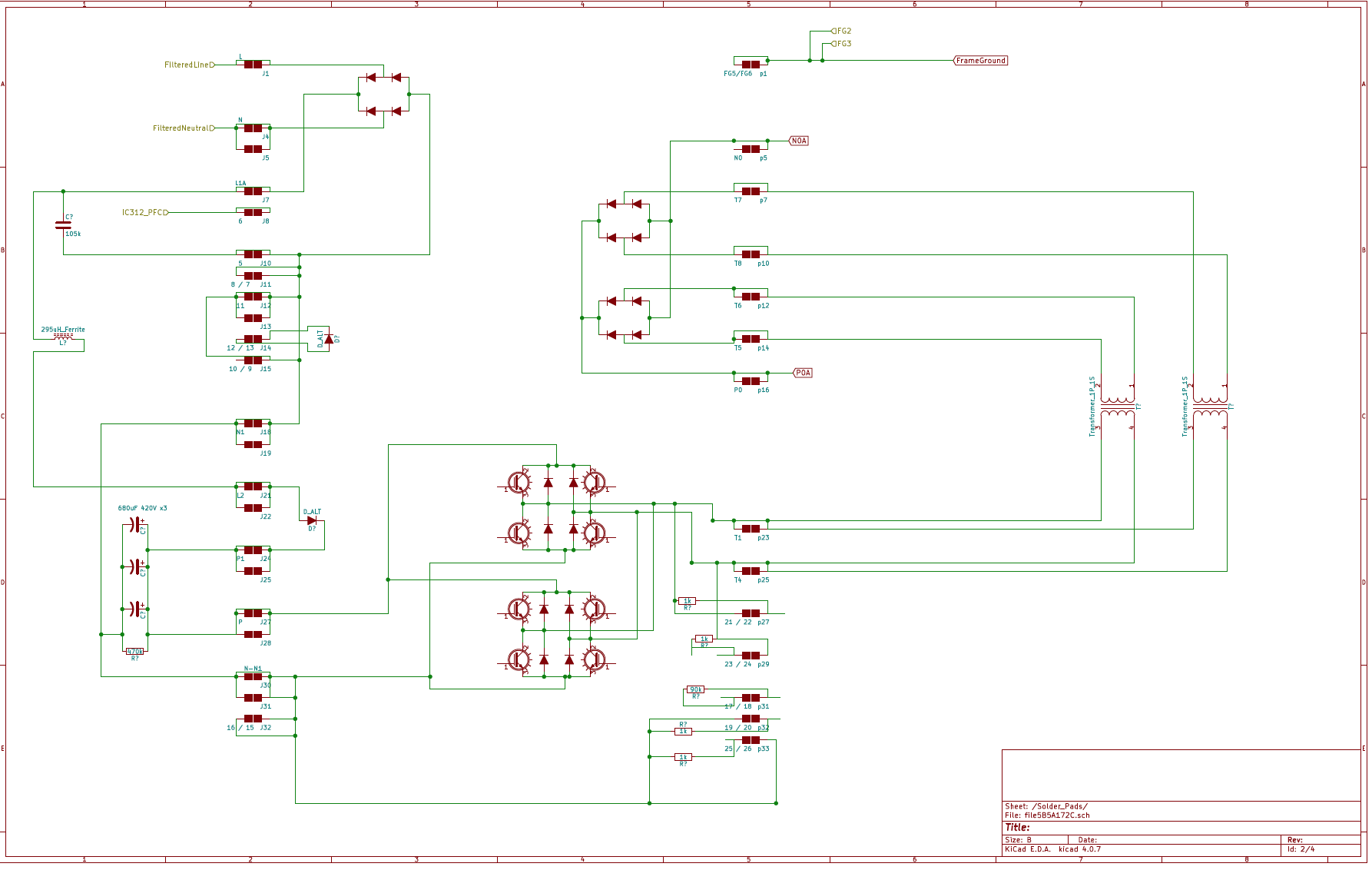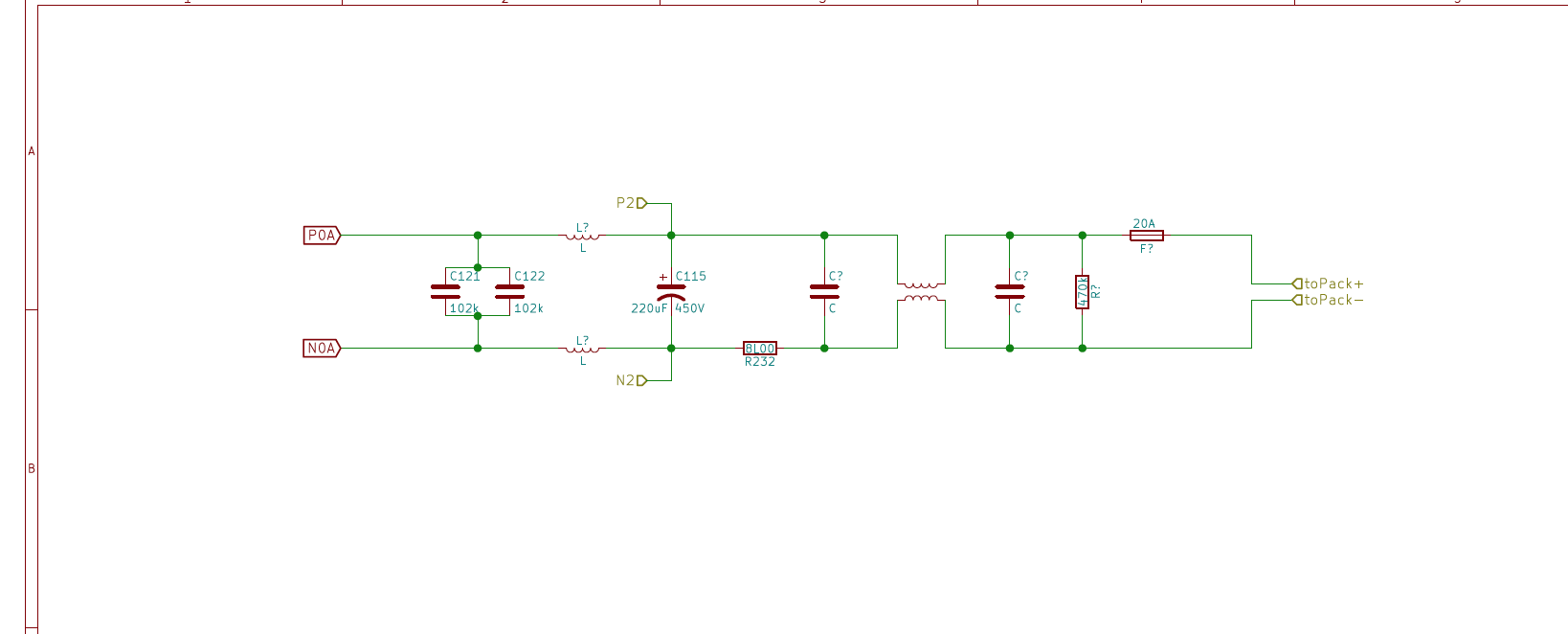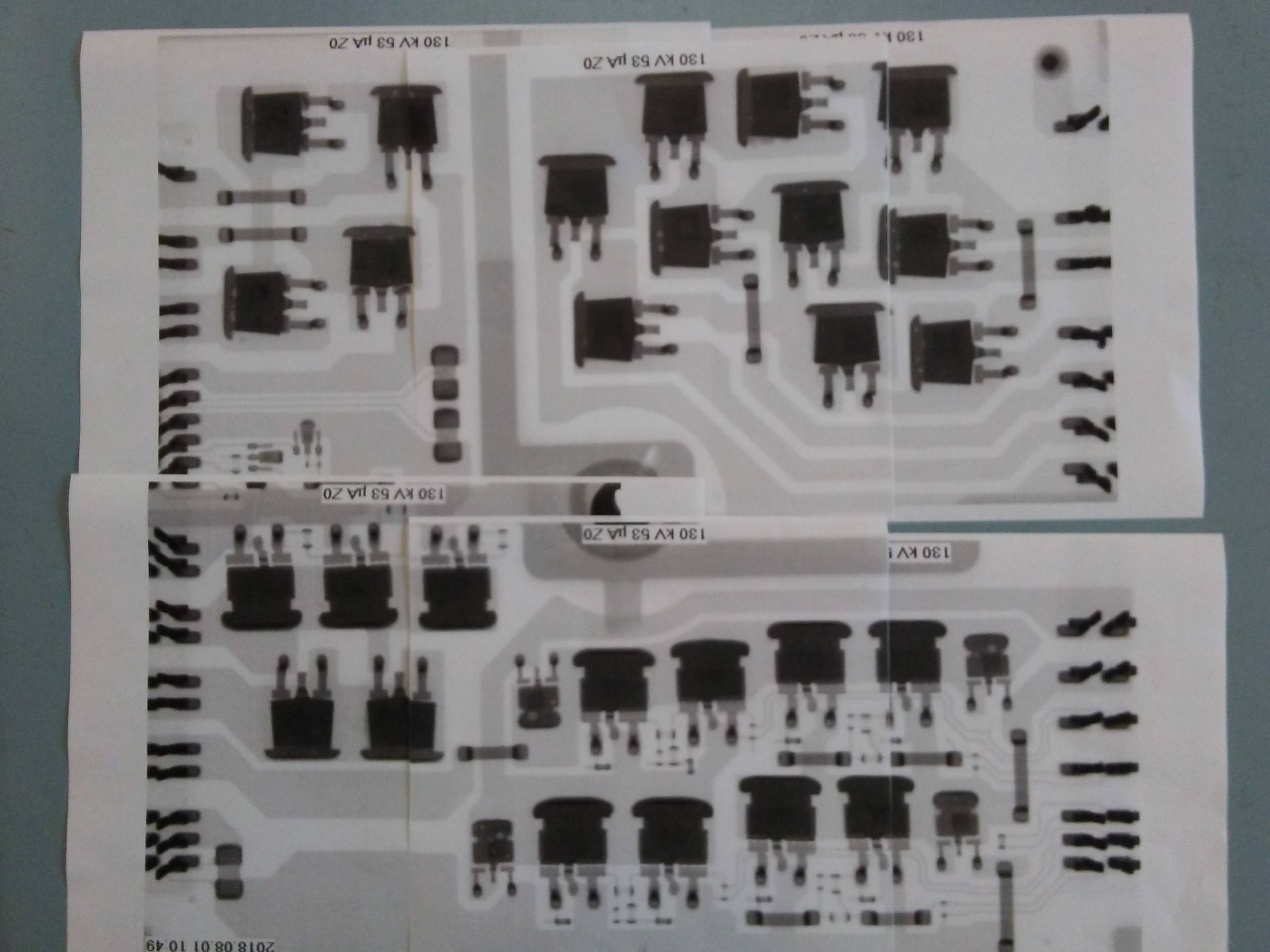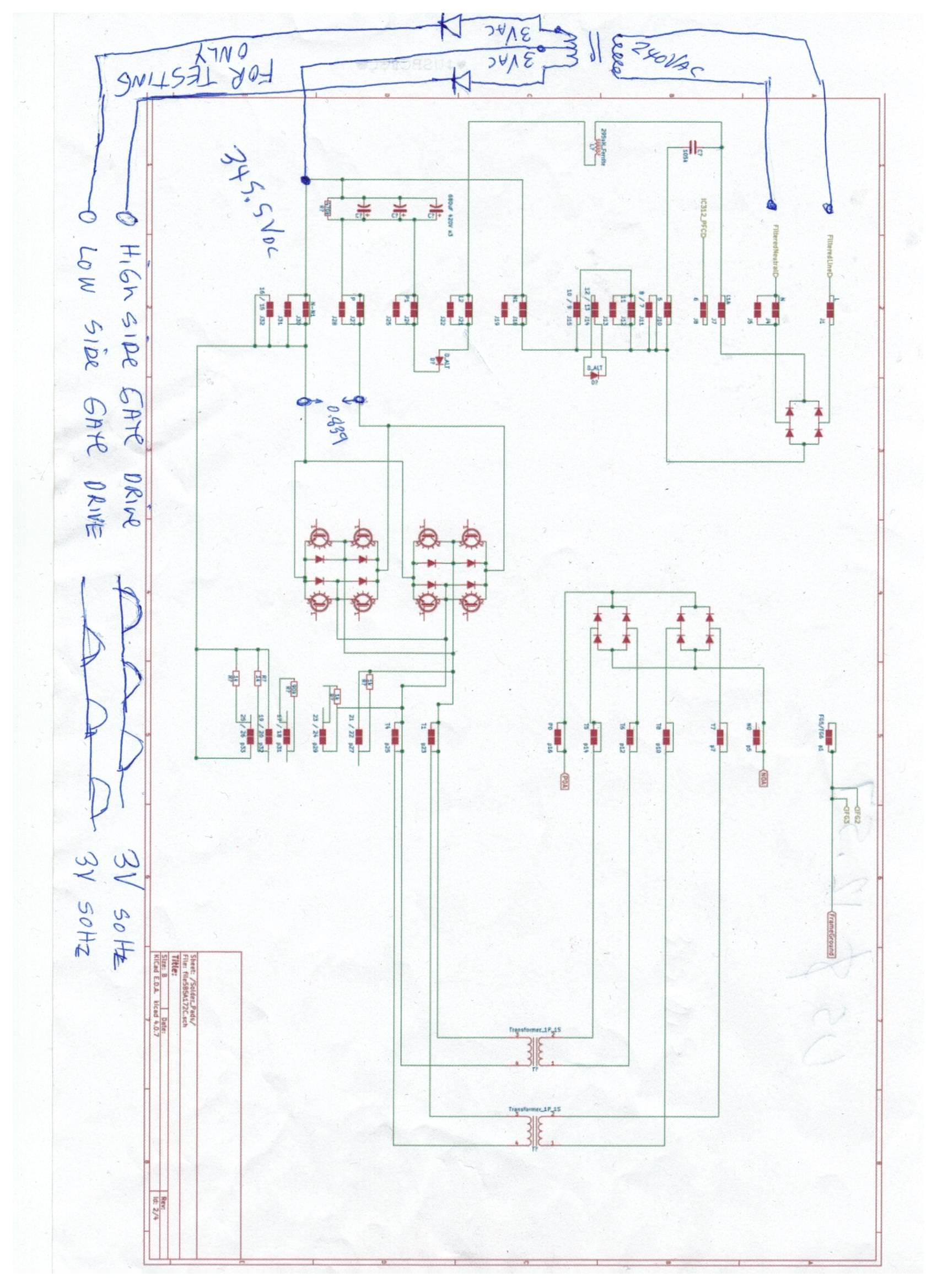Here are my tracing notes on the two solder rails, left and right, of the bottom board. My plan is to replace all this mess with a pretty schematic drawing using Kicad. i didn't find a round solder pad or via in the components list, so i used these square solder pads on the rough draft drawing and labeled them with what is printed on the board. i've numbered them from 1-32 and 1-33 for my convenience as if they were connector pins. The designation top and bottom refers to components on the board or below it on the waffle plate. BT is the blade terminals soldered to the board for connecting to the magnetics.
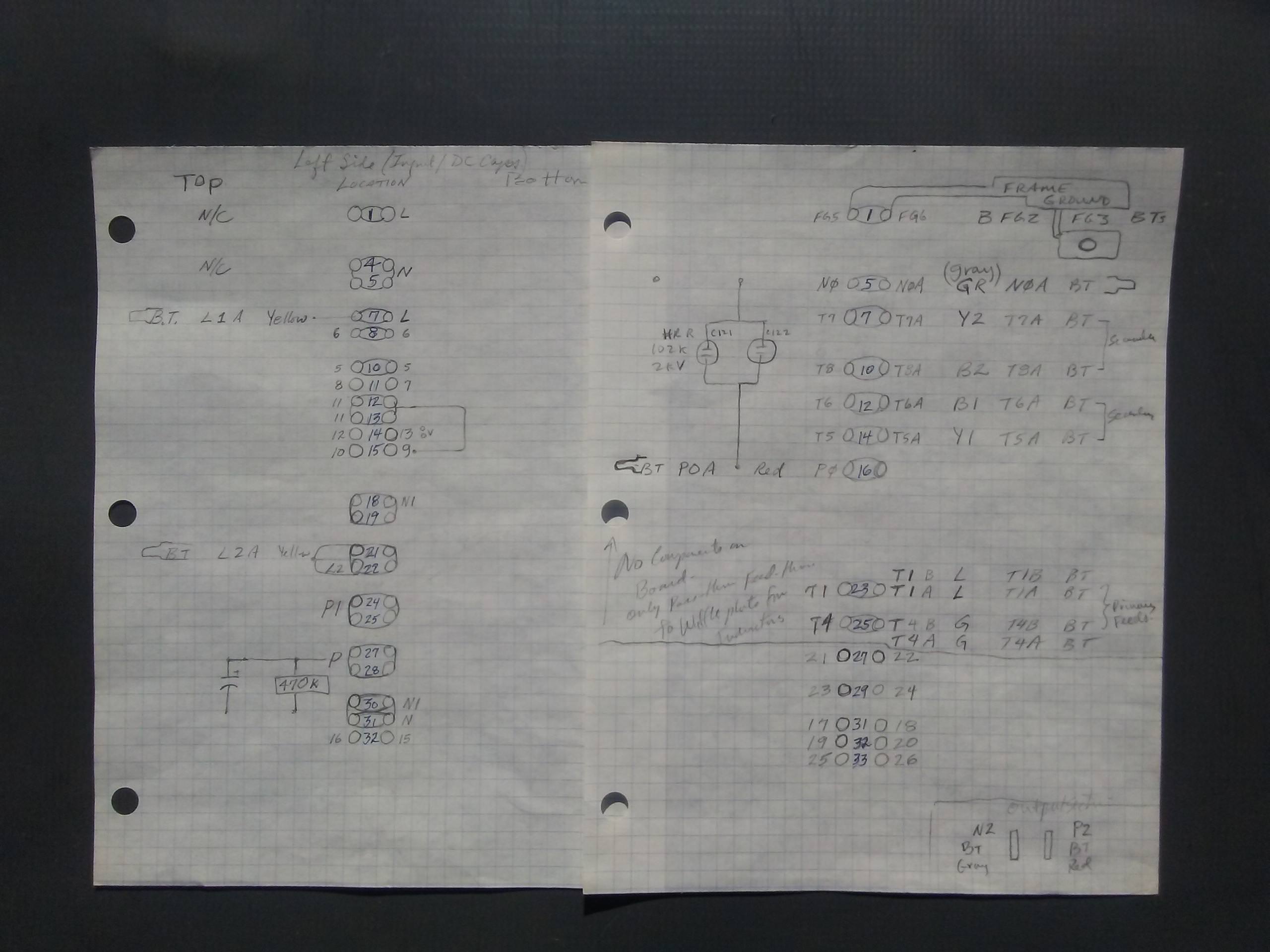
Here are some measurements of the inductor characteristics and a sketch of the final output filter before it leaves the box on it's way to the battery pack. These are marked as "zebra" transformers but i couldn't find any data sheet or info about these part numbers on their website.
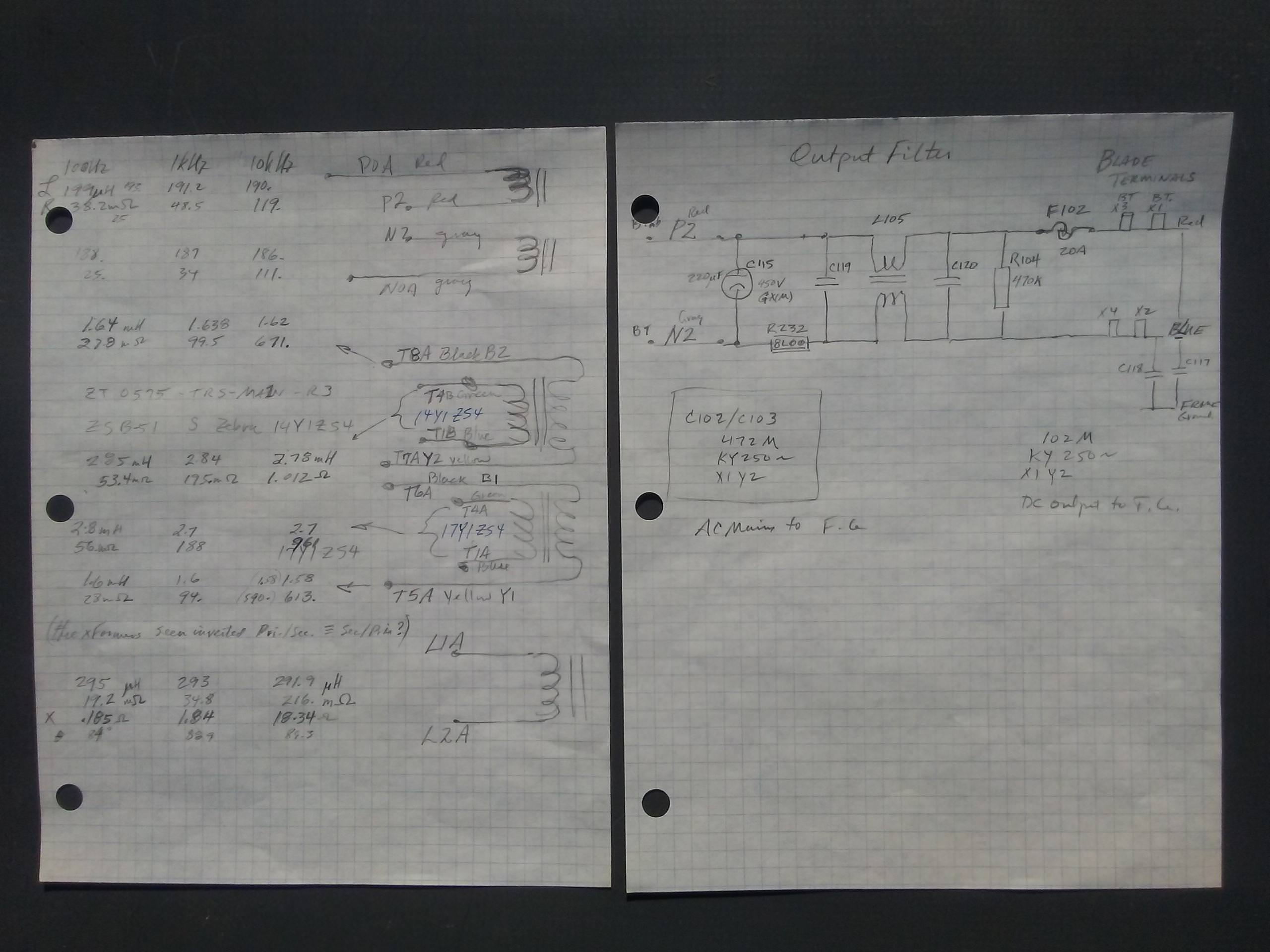
Rough draft Kicad sketch with measurement notes from the waffle plate (rectifier diode and FET diode drops). Toward the top center is a dashed box labelled Top with 2 capacitors--those are the output filter snubber caps blown in Jay and sky's potted doghouse.
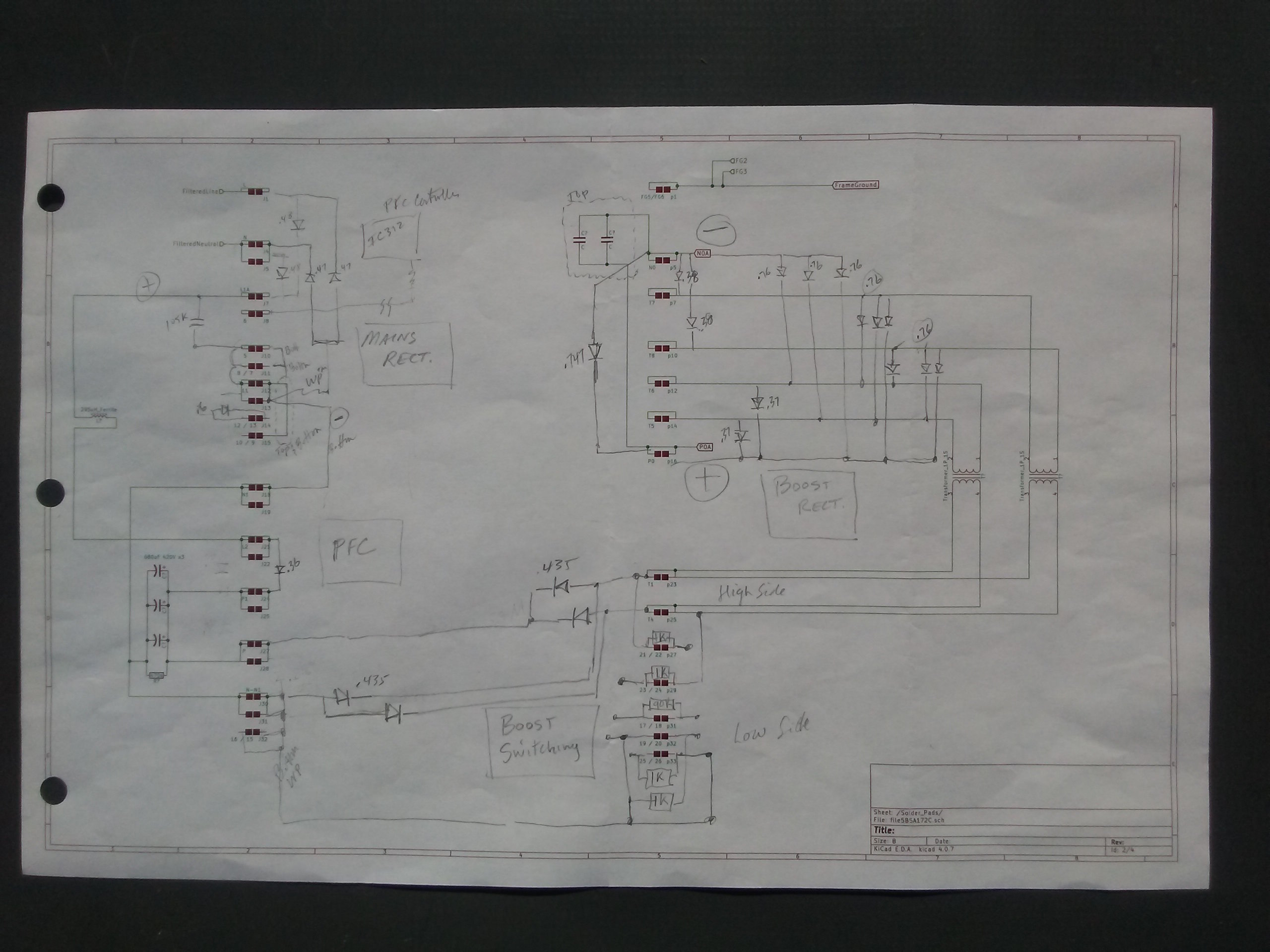
Here is a sketch of all the easy stuff i've traced that matches up with the OBC block diagram that Mits put in the technical information manual. This is the high-power analog stuff that carries the beans. The low level digital logic and control will need to be traced to tie it all together--but it can be more difficult and time-consuming to figure out due to the microscopic size of the components...
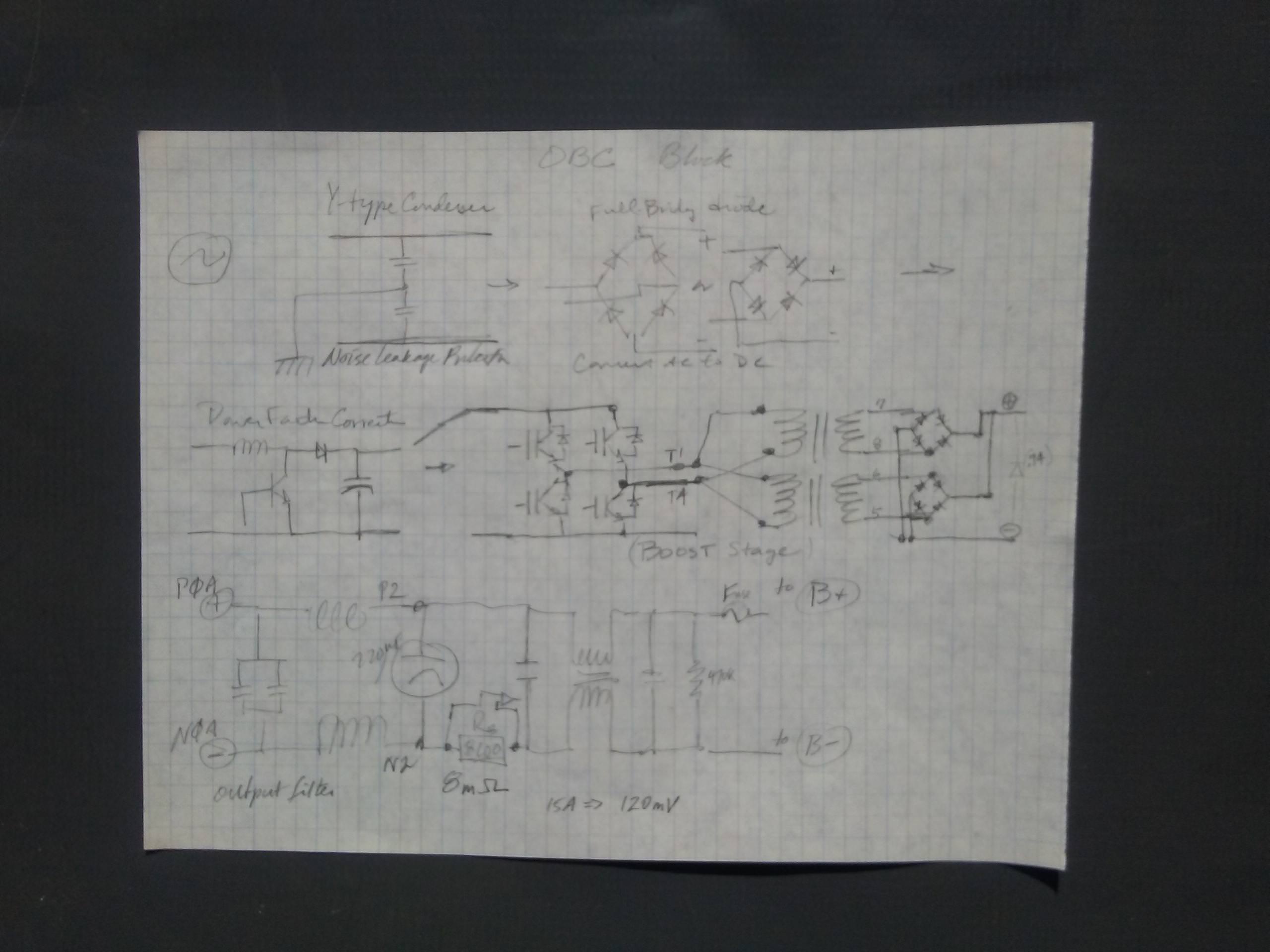
.cheers,

Here are some measurements of the inductor characteristics and a sketch of the final output filter before it leaves the box on it's way to the battery pack. These are marked as "zebra" transformers but i couldn't find any data sheet or info about these part numbers on their website.

Rough draft Kicad sketch with measurement notes from the waffle plate (rectifier diode and FET diode drops). Toward the top center is a dashed box labelled Top with 2 capacitors--those are the output filter snubber caps blown in Jay and sky's potted doghouse.

Here is a sketch of all the easy stuff i've traced that matches up with the OBC block diagram that Mits put in the technical information manual. This is the high-power analog stuff that carries the beans. The low level digital logic and control will need to be traced to tie it all together--but it can be more difficult and time-consuming to figure out due to the microscopic size of the components...

.cheers,


































